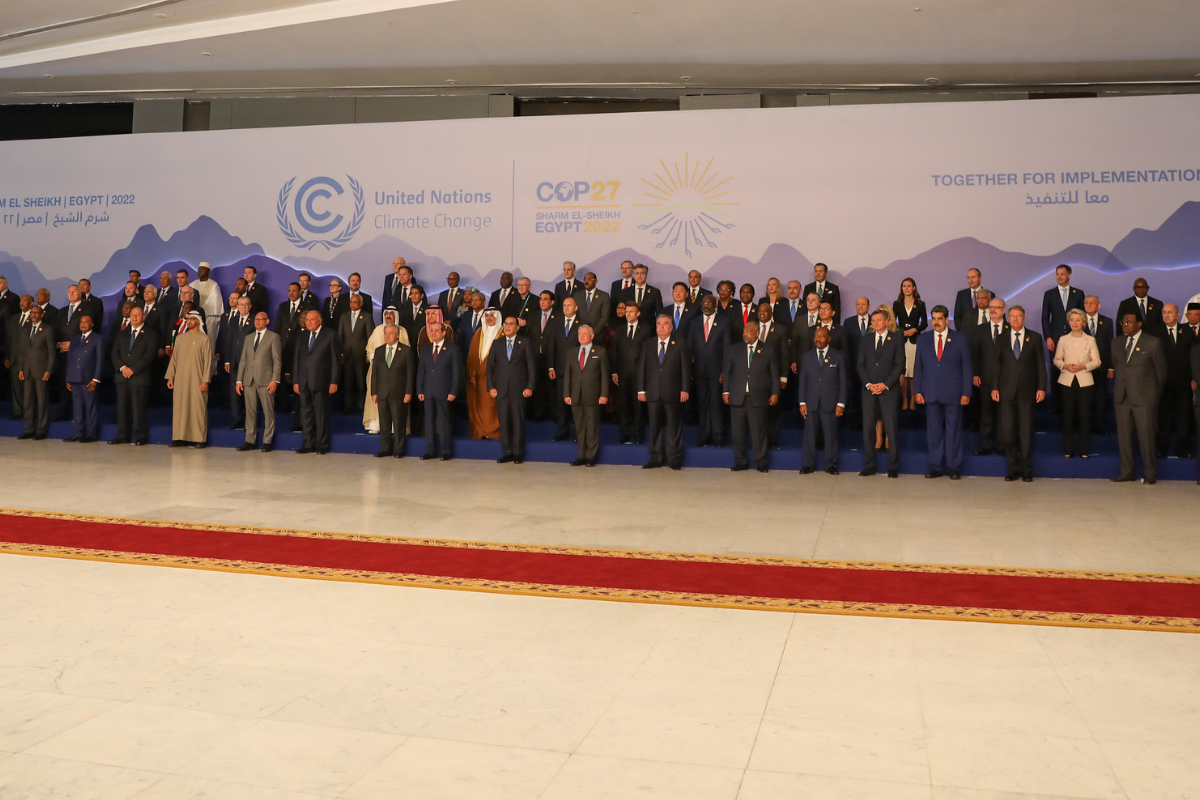As Rishi Sunak addressed delegates on the opening day of COP27, his message was clear: “Central to all our efforts is honouring our promises on climate finance.” The Prime Minister’s headline pledges was to triple the UK’s climate adaptation fund. Other promises included more support for clean energy innovation abroad. But how much exactly is the UK planning to spend on international climate measures, and how does the budget break down?
Already pledged: £11.6 billion
In 2019, then Prime Minister Boris Johnson announced that the UK would be increasing its international climate finance support to “at least £11.6 billion over the next five years”.
Rishi Sunak confirmed in his COP27 speech that this is still the plan: “The United Kingdom is delivering on our commitment of £11.6 billion.” Answering questions in Parliament a couple of days later, he repeated that the money will be spent “over the timeframe that was originally envisaged”.
Asked exactly what the money is being spent on, Sunak replied that we need to invest in “quality projects that will make a difference, not rush to get money out of the door and waste it”.
It is not yet clear how much, if any, of the £11.6 billion has been spent to date. It is part of the UK’s overall aid budget, which in 2021 was cut from 0.7% of GDP to just 0.5%. There have been fears about what the cut in the budget will mean for “non-essential” aid spending.
Climate adaptation funding: tripling to £1.5bn
The UK’s annual funding for climate adaptation measures was set at £500 million in 2019. At COP27, the Prime Minister announced that the government is tripling this. By 2025, it plans to spend £1.5 billion a year on climate adaptation measures.
This will come out of the original £11.6 billion rather than being extra money. It will go to the countries most likely to be affected by climate change, to help them build and adapt infrastructure to cope. £200 million will go to the African Development Bank. We may think of drought as the biggest climate-related problem facing African countries, but flooding is a serious issue too. In October 2022, flooding affected five million people in 19 different countries across West and Central Africa. They now need immediate help, as well as long-term help in becoming more resilient to future flooding.
Congo forest conservation: £90m
The UK government is also committing £90 million for conservation in the Congo Basin. This is the world’s second largest forest after the Amazon and supports thousands of different wildlife species, many endangered. It is seriously threatened by the prospect of oil and gas exploration. In July 2022, the government of the Democratic Republic of the Congo began auctioning off areas of the forest for oil and gas fields. The area under threat is nearly the size of England. Destroying the forest not only jeopardises one of the world’s most important carbon sinks, but risks releasing carbon stored in adjacent peatlands.
The £90 million for the Congo Basin is part of a £1.5 billion fund to protect the world’s forests, which is itself part of a £3 billion fund ringfenced for nature and originally promised in 2021. Again, it will come out of the existing commitment of £11.6 billion rather than being new money.
Forests and their communities: £65 million+
The UK has also pledged £65 million in funding for the Nature, People and Climate Investment Fund. This is intended to support “indigenous and local forest communities”. There is also an undisclosed sum for Treevive, which works to conserve and restore tropical forests.
Clean energy innovation: £65.5 million
The final headline pledge from the UK at COP27 was a further £65.5 million for the Clean Energy Innovation Facility. This supports scientists in developing countries to create green solutions, such as “biomass-powered refrigeration in India, prototype lithium-ion batteries in Nigeria and clean hydrogen-based fuels for steel production in Morocco”. This represents a significant increase on last year’s £40 million budget for the fund, which itself was a dramatic increase on 2019-2020’s £4.1 million.
Time to act?
The UK is also in talks with the President of Kenya about partnering on various carbon-cutting schemes, including solar and geothermal power plants and Nairobi’s much-delayed Railway City project.
But overall, the proportion of genuinely new overseas climate funding from the UK is low – perhaps an inevitable consequence of cutting the overall international development budget. Greenpeace and Friends of the Earth were quick to point out that the UK’s actual record on climate spending fails to match the sums promised in the past. Three years on from the original £11.6 billion pledge, perhaps it is now time to focus on getting the money to the projects and people who need it, before it is too late.
Image credit: UNFCC flickr













